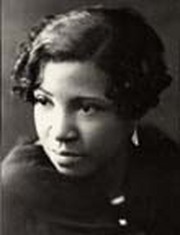Sound is often referred to as the “universal language,” that which can touch the human soul. Music is able to transcend race and political preference while invoking the deepest of emotions sometimes without saying a word. During this time period, the musical style of blacks was becoming more and more attractive to whites.Harlem with respect to the cultural Renaissance, was the center of a musical evolution which uncovered amazing talent and created a unique sound that has yet to be paralleled.
Below are some of the most talented, influential, and remembered artists of the Harlem Renaissance Era.
- Billie Holiday
- Chick Webb
- Louis Armstrong
- Duke Ellington
Billie Holiday (1915-1959)
- She was one of the first black women to work with a white orchestra.
- She cowrote a few songs that became jazz standards. "God Bless the Child," "Don't Explain," "Fine and Mellow," and "lady Sings the Blues."
Chick Webb (1905-1939)
- He became one of the best-regarded band leader and drummers of the new “Swing” style. Drumming legend Buddy Rich cited Webb’s technique and performances as heavily influential on his own drumming and referred to Webb as “the daddy of them all.
- Webb was deemed the most worthy recipient to be crowned the first "King of Swing."
Louis Armstrong (1901-1971)
 - One of the most famous musicians of the Harlem Renaissance was Louis Armstrong. Having come from a poor family in New Orleans, Armstrong began to perform with bands in small clubs, and play at funerals and parades around town in New Orleans.
- One of the most famous musicians of the Harlem Renaissance was Louis Armstrong. Having come from a poor family in New Orleans, Armstrong began to perform with bands in small clubs, and play at funerals and parades around town in New Orleans.- Armstrong moved to New York City, and began playing his music with the Fletcher Henderson Orchestra at the Roseland Ballroom in 1929.
- All throughout the 1950's and 60's, Armstrong appeared in films and made many international tours. Louis Armstrong is one of the most appreciated jazz artists of the Harlem Renaissance, and of all times. People learned to appreciate both jazz, and African American music even more, because of this man.
Duke Ellington (1899-1974)
- Duke Ellington was the most important composer in the history of jazz as well as being a bandleader who held his large group together continuously for almost 50 years.
- he moved to New York in 1923 and, during the formative Cotton Club years, experimented with and developed the style that would quickly bring him worldwide success and recognition
- Among Ellington's many honors and awards were honorary doctorates from Howard and Yale Universities
Below is one of my favorites, put together By Duke Ellington and Louis Armstrong in 1930, a song titled " Mood Indigo"
















